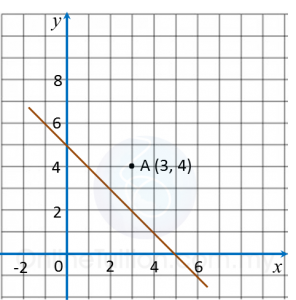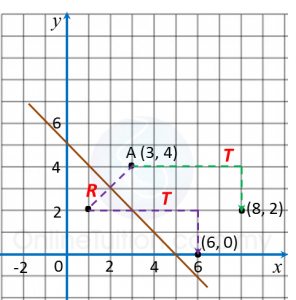Example 1:
Solution:
(1x+24−y−1)=(132−1)
x + 2 = 3
x = 1
4 – y = 2
–y = –2
y = 2
Example 2:
Solution:
(a)(32p+qp−3)=(318−2q−3)
2p + q = 1
Substitute (1) into (2),
Substitute p = –2 into (1),
(b)(1005p−81)=(p−2q0−4q1)
Substitute (1) into (2),
Substitute q = –3 into (1),
State the values of the unknowns in the following pairs of equal matrix.
(1x+24−y−1)=(132−1)
Solution:
(1x+24−y−1)=(132−1)
x + 2 = 3
x = 1
4 – y = 2
–y = –2
y = 2
Example 2:
Calculate the values of p and q in each of the following matrix equations.
(a)(32p+qp−3)=(318−2q−3)(b)(1005p−81)=(p−2q0−4q1)
Solution:
(a)(32p+qp−3)=(318−2q−3)
2p + q = 1
q = 1 – 2p ----(1)
p = 8 – 2q ----(2)
Substitute (1) into (2),
p = 8 – 2(1 – 2p)
p = 8 – 2 + 4p
p – 4p = 6
–3p = 6
p = –2
Substitute p = –2 into (1),
q = 1 – 2(–2)
q = 5
(b)(1005p−81)=(p−2q0−4q1)
10 = p – 2q
p = 10 + 2q ----(1)
5p – 8 = –4q ----(2)
Substitute (1) into (2),
5 (10 + 2q) – 8 = –4q
50 + 10q – 8 = –4q
14q = –42
q = –3
Substitute q = –3 into (1),
p = 10 + 2(–3)
p = 4
























